Top 6 IBM DataStage Alternatives & Competitors
Summarize this article with:
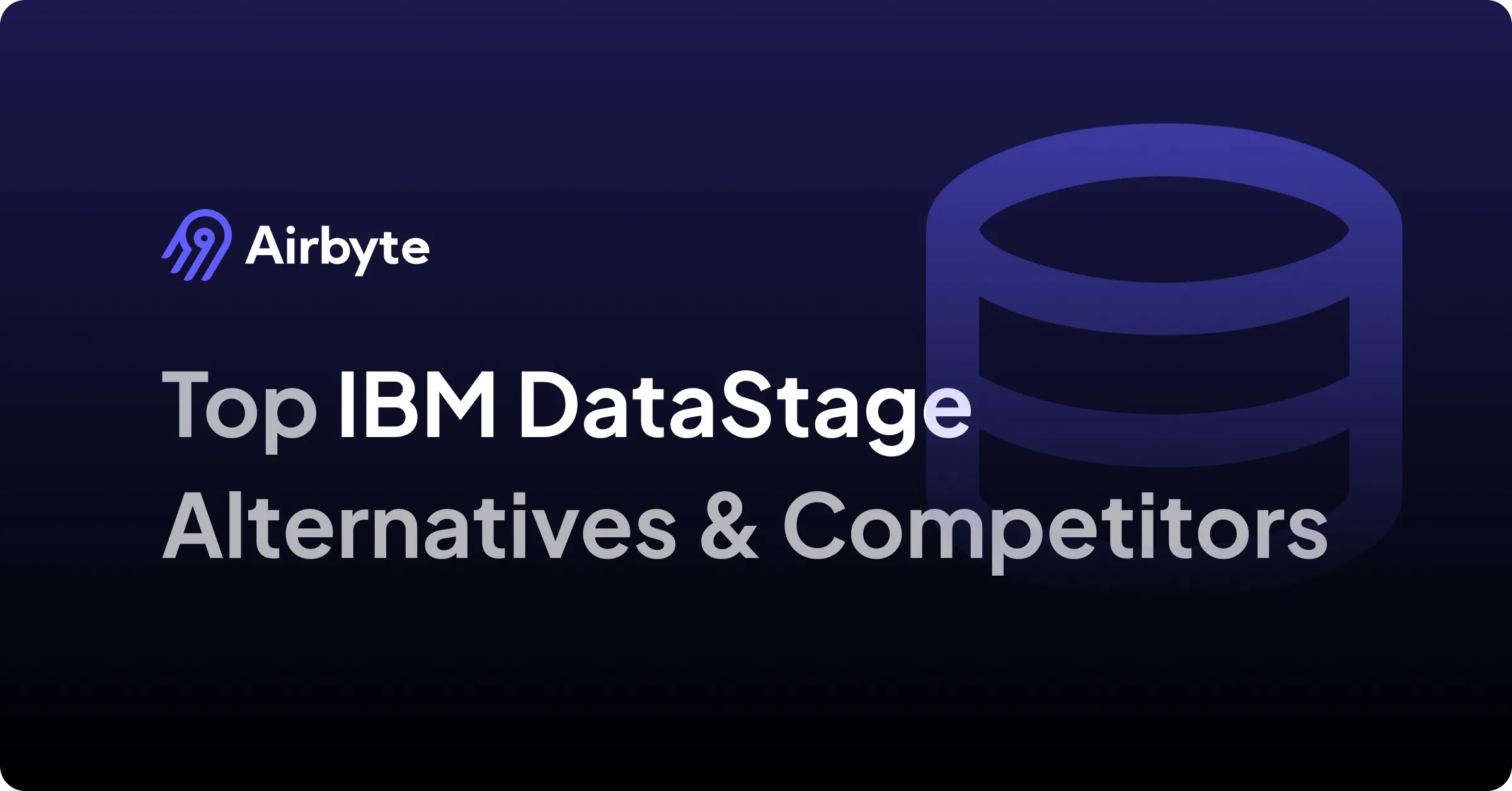
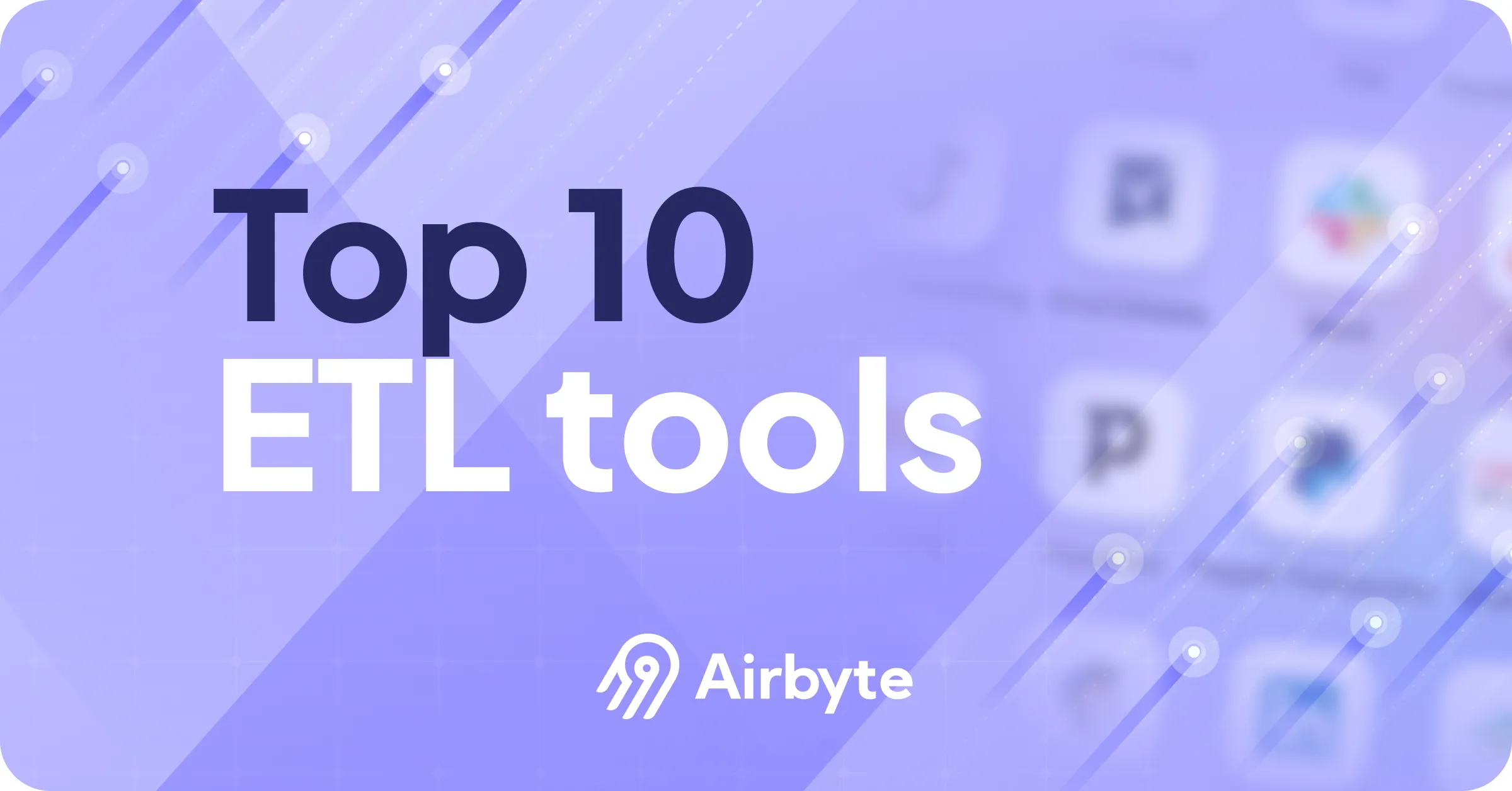
Effective data management is essential to leverage the full potential of vast data from diverse sources. Data integration tools like IBM DataStage offer streamlined solutions for consolidating data, enabling you to harness the value of your data assets for business intelligence. Although being a robust platform, DataStage has certain limitations! Therefore, it is crucial to look for alternatives.
In this article, you’ll explore the most popular DataStage alternatives you can choose for your business.
Overview of IBM DataStage
IBM DataStage, an enterprise-level data integration tool, enables you to develop and execute jobs to move and transform data. The key elements of a job design are the stages and the links between the stages. Each stage represents a data source, a processing step, or a target system. It also includes the processing logic that moves the data from input to output links. Since the stages are flexible and configurable, you can combine multiple stages together to meet your business requirements.
Key Features
Pre-built Connectors: IBM DataStage offers pre-built connectors that enable you to move data between multiple cloud sources and data warehouses, such as Netezza and BigQuery.
IBM DataStage Flow Designer: It is a web-based, user-friendly interface that empowers you to run DataStage jobs. Flow Designer offers features like automatic metadata propagation and simultaneous highlighting of all compilation errors, improving productivity.
Automated Load Balancing: DataStage utilizes a parallel engine that helps you process large-scale data efficiently. It automatically balances workloads to maximize throughput and performance.
Pre-built Transformations: The platform provides a rich set of transformation functions that let you enrich and transform data as per your business requirements.
Why Pick a DataStage Alternative
DataStage, while a powerful solution, also comes with certain limitations. Here are a few of them:
- IBM DataStage has limited built-in connectors compared to other data integration tools, so it can be a real challenge to collect data from different sources.
- Deploying and maintaining DataStage is time-consuming and requires specialized skills for configuration in large multi-platform environments.
- The tool’s powerful features come with a steep learning curve, especially for those without extensive experience in enterprise-level ETL tools.
- The platform provides only a few insights into operational metrics. Therefore, you might find it difficult to monitor and optimize workflows.
- The licensing and operational costs of DataStage can be quite high. This makes it less accessible for smaller businesses or those with limited budgets.
Top 6 IBM DataStage Alternatives
Here are the popular alternatives to DataStage:
Airbyte

Airbyte is an AI-powered data integration platform that enables you to automate the process of building and managing data pipelines. With an extensive catalog of 550+ pre-built connectors, you can consolidate data from diverse sources to your preferred destination. If you don’t find the required connector, Airbyte lets you create a custom connector using the Connector Development Kit (CDK). You can also use AI Assistant in Connector Builder to speed up the development process.
Why a Better Alternative to DataStage?
Ease of Use: Airbyte offers multiple options for developing data pipelines. These include UI, API, Terraform Provider, and PyAirbyte. This flexibility reduces the learning curve and enables faster implementation of data integration workflows compared to DataStage.
Streamlined GenAI Workflows: DataStage doesn’t support vector databases as destinations. However, with Airbyte, you can directly move unstructured data into popular vector stores like Pinecone, Chroma, and Milvus. This allows you to prepare data for LLMs, facilitating context-based retrieval and enhancing the relevancy of generated outputs.
RAG Pipelines: You must integrate DataStage with different IBM Cloud services, such as Watson Studio, to build RAG pipelines. On the other hand, Airbyte supports RAG-specific transformations, including chunking powered by LangChain and embedding using providers like OpenAI or Cohere. These embeddings can be stored in vector databases for further processing.
Deployment Flexibility: While DataStage offers a basic version for on-premises deployment, you must upgrade to IBM Cloud Pak for Data to access hybrid or multi-cloud capabilities. In contrast, Airbyte provides flexible deployment options. You can deploy it as a cloud-hosted service, self-host on your own infrastructure, or even in a hybrid model. This gives you greater control over how your data is stored and managed.
Pricing
In addition to the free Open-Source version, Airbyte offers three pricing plans—Cloud, Team, and Enterprise edition. The Cloud edition operates on a pay-as-you-go model with a volume-based pricing structure. The Team and Enterprise plans offer customized pricing. Both of them include capacity-based pricing, where costs are determined by the processing capacity of the data pipelines in use.
Rating
4.5 out of 5 based on G2.
Suggested Read: Airbyte vs IBM DataStage.
Apache Nifi

Apache NiFi, an open-source data integration tool, empowers you to automate data flow between your systems. It provides a wide range of pre-built processors to help you ingest data from various sources, transform it, and route it to different destinations.
Why a Better Alternative to DataStage?
Web-based User Interface: NiFi offers a browser-based interface that facilitates the visual design and management of data flows. This interface makes it easy to design and monitor data flows without extensive coding skills.
Prioritized Queuing: Apache NiFi uses a queuing system to manage large data inflows. You can set prioritization schemes to retrieve data from the queue. By default, it pulls the oldest data first, but you can configure it to pull the newest data first.
Advanced Security: NiFi helps you with a secure data exchange using encryption protocols like 2-way Secure Sockets Layer (SSL) at every stage of the data flow. When you provide sensitive details, such as a password, it is immediately encrypted on the server side. It is also not exposed on the client side, even in its encrypted form.
Pricing
Apache NiFi, being open-source, is free to use.
Rating
4.2 out of 5 stars based on G2.
Suggested Read: Airbyte vs Apache NiFi.
Informatica PowerCenter
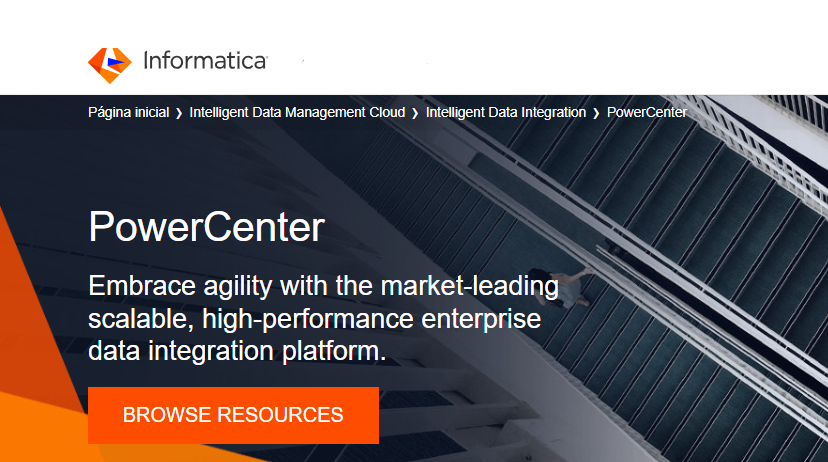
Informatica PowerCenter is an enterprise-grade data integration tool that supports a wide range of data initiatives like data warehousing and analytics. It enables you to integrate data from diverse sources using high-performance connectors.
Why a Better Alternative to DataStage?
Metadata Manager: It is a PowerCenter web application that helps you search metadata objects, trace data lineage, analyze metadata usage, and perform data profiling on the metadata.
Automated Data Validation: PowerCenter offers script-free automated data validation across development, test, and production environments. This helps in ensuring data reliability throughout the data integration process.
Pricing
Informatica PowerCenter adopts a custom pricing model based on Informatica Processing Unit consumption (IPU). The payment is determined by the number of IPUs utilized.
Rating
4.4 out of 5 stars based on G2.
AWS Glue
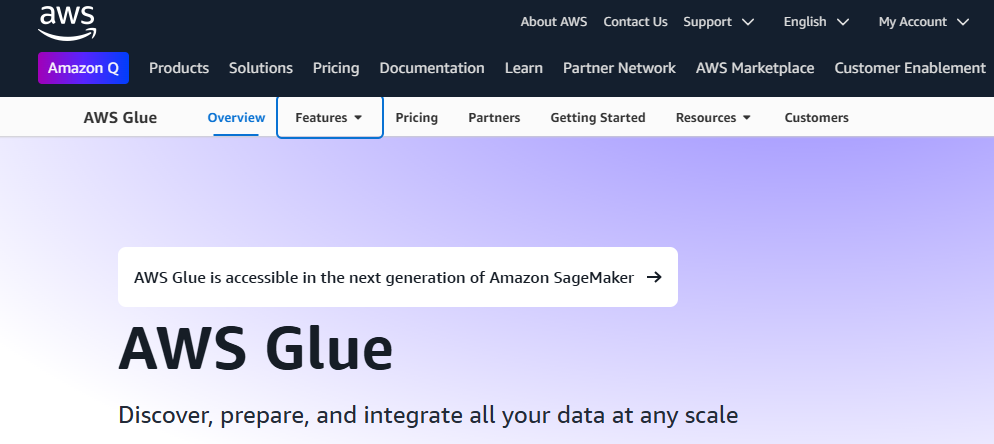
AWS Glue is a serverless and scalable solution for data integration provided by Amazon Web Services (AWS). It enables you to create and manage jobs that move data between different data stores. You can run these jobs on a schedule, on-demand, or based on an event.
Why a Better Alternative to DataStage?
- Automatic Data Discoverability: AWS Glue crawlers can automatically discover and catalog new or updated data from multiple data sources. This reduces the overhead of manual metadata management.
- Tight Integration with AWS Ecosystem: You can integrate AWS Glue with other AWS services, like Amazon Redshift, S3, or Athena. This greatly helps in streamlining your data processing workflows.
- GenAI Troubleshooting: AWS Glue uses generative AI to quickly identify and resolve issues. It analyzes job metadata, execution logs, and configurations to provide root cause analysis and actionable recommendations, reducing troubleshooting time.
Pricing
AWS Glue pricing is dependent on the number of Data Processing Units (DPUs) used and the duration of your ETL jobs. Prices may also vary by region.
Rating
4.3 out of 5 stars based on G2.
Suggested Read: Airbyte vs AWS Glue.
Azure Data Factory

Azure Data Factory (ADF) is a fully managed, cloud-based data integration platform. It helps you create data-driven workflows to orchestrate and automate data movement at scale. With 90+ built-in connectors, ADF allows you to ingest data from on-premises, SaaS, or cloud systems into your preferred destination.
Why a Better Alternative to DataStage?
- Customizable Data Flows: You can create highly customizable data flows, like adding custom actions or steps for data processing. This allows for custom data transformations that are in accordance with your business needs.
- Data Preview and Validation: ADF provides tools for previewing and validating data during copy activities. This ensures that data is correctly copied and written to the target data system, reducing errors and improving data quality.
- Custom Event Triggers: Azure Data Factory helps you to automate data processing using custom event triggers. You can set up workflows that automatically execute actions based on specific events.
Pricing
ADF pricing is based on the number of your activity runs and hours required to execute the integration runtime.
Rating
4.6 out of 5 stars based on G2.
Suggested Read: Airbyte vs Azure Data Factory.
Fivetran
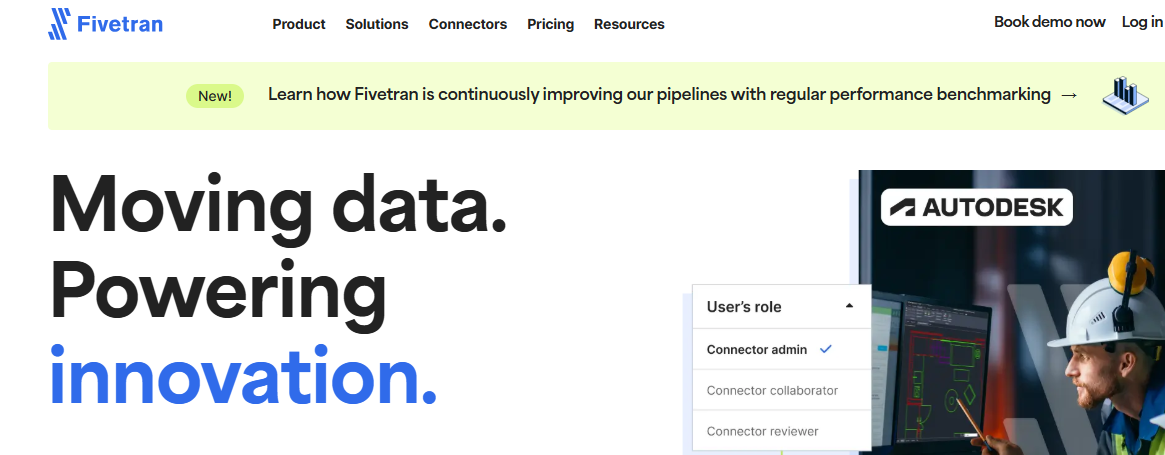
Fivetran is an automated data movement tool that lets you move data from vast sources to a centralized destination, such as a data warehouse. It offers over 500 pre-built connectors for diverse data sources, enabling quick data integration without extensive development effort.
Why a Better Alternative to DataStage?
- Fivetran Platform Connector: This is a free connector that offers detailed log events like sync statistics and user activities on each connection. This visibility helps monitor your performance, find optimizations, and track resource usage.
- Secure Data Handling: Fivetran helps you secure your sensitive data with features like data blocking and column hashing. You can exclude specific tables or columns while syncing or hash the values of the columns that store sensitive data.
Pricing
Fivetran offers three pricing plans—Standard, Enterprise, and Business Critical. The pricing is determined by your monthly active rows (MAR) usage, and each plan comes with different features.
Rating
4.2 out of 5 stars based on G2.
Suggested Read: Fivetran Alternatives.
Migrating From IBM DataStage?
Migrating from IBM DataStage to other ETL tools involves several key steps. Here is a structured approach to follow:
Evaluate Current Environment: Understand your existing DataStage jobs, workflows, and dependencies, including data sources, transformations, and destinations.
Choose Target ETL Tool: Select an appropriate ETL tool based on your business requirements and existing tech stack.
Plan the Migration: Create a detailed migration plan. Outline the steps, timeline, and resources needed. This will serve as a roadmap for the entire migration process.
Set Up the New ETL Environment: Install and configure the chosen ETL tool. Ensure the new environment enables you to handle the expected data volumes and processing requirements.
Map DataStage Jobs to New Tool: Create a detailed mapping document that outlines the functionality of each DataStage job. This includes source-to-target mappings, transformations applied, and any business rules implemented.
Test the New ETL Processes: You must test and validate the migrated jobs and perform tuning to ensure their optimal performance.
How to Choose The Right DataStage Alternative?
Choosing the right DataStage alternative can be quite challenging. Here are some key factors to consider.
Ease of Use: Find a solution that’s user-friendly, even for nontechnical users. This saves time and reduces the need for training.
Deployment Flexibility: Choose a data integration platform that offers multiple deployment options, including cloud, on-premise, and hybrid models. This helps you choose the right fit for your business needs.
Cost: Analyze the pricing structure to determine whether it suits your budget. Consider initial setup and ongoing expenses to ensure the tool offers long-term value.
Conclusion
In this article, you have explored the top IBM DataStage alternatives. You have also seen the key factors to consider to pick the right alternative. However, if you are looking for a platform to fulfill your data integration needs effortlessly, Airbyte is the ideal choice. It eliminates the need for coding, reduces manual interventions, and offers several ways to manage your pipeline.
Sign up for the Airbyte platform today to leverage its features.
What should you do next?
Hope you enjoyed the reading. Here are the 3 ways we can help you in your data journey:



Frequently Asked Questions
What is ETL?
ETL, an acronym for Extract, Transform, Load, is a vital data integration process. It involves extracting data from diverse sources, transforming it into a usable format, and loading it into a database, data warehouse or data lake. This process enables meaningful data analysis, enhancing business intelligence.
This can be done by building a data pipeline manually, usually a Python script (you can leverage a tool as Apache Airflow for this). This process can take more than a full week of development. Or it can be done in minutes on Airbyte in three easy steps: set it up as a source, choose a destination among 50 available off the shelf, and define which data you want to transfer and how frequently.
The most prominent ETL tools to extract data include: Airbyte, Fivetran, StitchData, Matillion, and Talend Data Integration. These ETL and ELT tools help in extracting data from various sources (APIs, databases, and more), transforming it efficiently, and loading it into a database, data warehouse or data lake, enhancing data management capabilities.
What is ELT?
ELT, standing for Extract, Load, Transform, is a modern take on the traditional ETL data integration process. In ELT, data is first extracted from various sources, loaded directly into a data warehouse, and then transformed. This approach enhances data processing speed, analytical flexibility and autonomy.
Difference between ETL and ELT?
ETL and ELT are critical data integration strategies with key differences. ETL (Extract, Transform, Load) transforms data before loading, ideal for structured data. In contrast, ELT (Extract, Load, Transform) loads data before transformation, perfect for processing large, diverse data sets in modern data warehouses. ELT is becoming the new standard as it offers a lot more flexibility and autonomy to data analysts.

.webp)